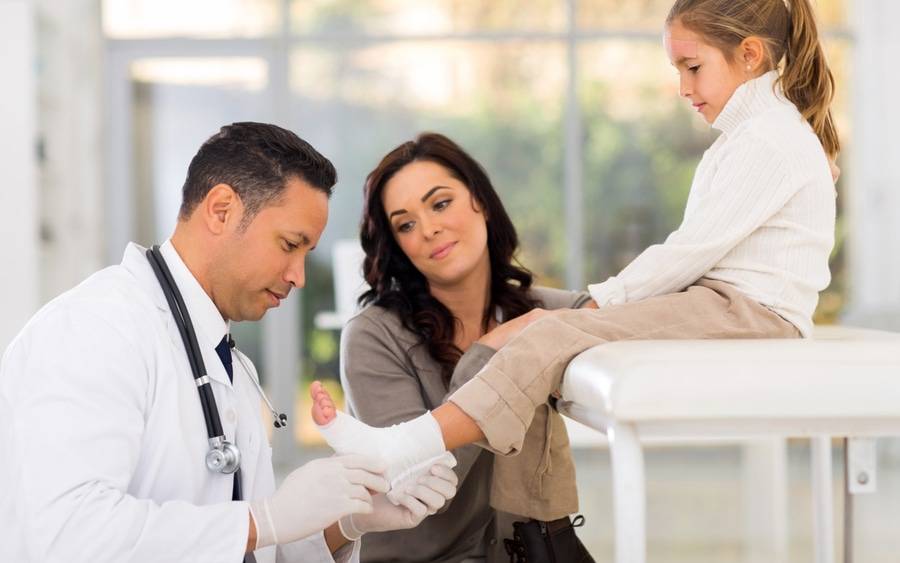What Is Urgent Care For?
Same-day clinics provide non-emergency care

Same-day clinics provide non-emergency care
Urgent care centers are walk-in clinics that treat non-life-threatening medical issues. They are especially helpful when primary care offices are closed or cannot see patients right away.
These clinics play a pivotal role in diverting non-emergency cases away from the emergency department (ED), saving the patient time and money. Though the issues they handle require care within 24 hours, they are not emergencies that need to be seen in the ED. They could be things like minor fractures, cuts, sprains and infections.
The number of urgent care centers has grown as demand for their quick and convenient services has increased.
“Urgent care centers fill the space between primary care and emergency rooms,” says Michelle Voigt, MD, an urgent care physician at Scripps Medical Center Jefferson in Oceanside. “They offer fast, same-day treatment for illnesses and injuries that need attention but aren't severe enough for the emergency department.”
Urgent care at Scripps
Scripps provides urgent care for adults and children at three sites in San Diego County. The Oceanside and Rancho Bernardo locations are open every day from 8 a.m. to 8 p.m. The Torrey Pines location is open 24 hours a day.
Benefits of urgent care
- Most stay open late, including evenings and weekends.
- You don’t need an appointment.
- Wait times are shorter than the ED
- More affordable than ED visits
- Many insurance plans cover urgent care
Many clinics, including those at Scripps, now offer “I’m on My Way” or similar online check-in features.
What is urgent care for?
While urgent care centers provide a different level of care than emergency departments, their importance lies in what they do offer: quick, affordable care for non-life-threatening issues.
“Patients with moderate cuts or wounds that may bleed but are not life-threatening can choose urgent care. This option helps avoid the long wait times often found in emergency rooms,” Dr. Voigt says.
Other common conditions treated include:
- Abdominal pain
- Wound care, including stitches for cuts
- Dehydration
- Fever with/without rash
- Persistent diarrhea
- Vomiting
- Minor fractures
Urgent care providers can prescribe medications just like primary care doctors. Other services include X-ray imaging, CT scan, ultrasound and EKG.
Some urgent care centers may be staffed by physicians with emergency medicine backgrounds, especially those affiliated with hospitals or larger health systems like Scripps.
Urgent care vs. emergency care
Understanding the difference between urgent care and emergency care is important for getting the right treatment, when and where you need it.
It is important to go to the emergency room or call 911 right away for serious conditions. Time is critical.
“If you suffer a serious injury, like being hit by a car, a stab or gunshot wound, go to the ED immediately. Call 911 or have someone drive you, if possible,” says Dr. Voigt, who is both an urgent care and emergency care physician.
If a patient arrives at an urgent care center with an emergency, the staff will stabilize them. They will then transfer the patient to the closest emergency room.
Emergency departments are equipped to handle serious, life-threatening problems, such as:
- Chest pain or signs of a heart attack
- Stroke symptoms
- Difficulty breathing
- Severe burns or bleeding
- Severe trauma
- Sepsis or complications from cancer treatments
Express care clinics
There is another type of same-day clinic for minor illnesses or injuries. These are often called walk-in clinics or express care clinics.
They are different from urgent care centers. They treat minor issues that are not as complex as those at urgent care centers. These clinics are often staffed by nurse practitioners or physician assistants.
At Scripps, these walk-in clinics are called Scripps HealthExpress and are primarily located within Scripps Clinic and Scripps Coastal Medical Center locations, not hospitals.
They treat:
- Colds and flu
- Minor cuts and skin issues
- Allergies
- Mild sprains
- Sore throats
- Routine vaccinations/flu
Similar clinics can also be found inside retail settings and are sometimes referred to as convenient care or retail clinics.
Connected care at Scripps
All Scripps urgent care centers and HealthExpress clinics are part of the Scripps Health network. This means your medical records are available in different care settings. This helps with follow-up and coordination with your primary care doctor or specialist.
Not a substitute for primary care
Urgent care and walk-in clinics provide important medical help. However, they cannot take the place of your primary care provider.
“Urgent care is designed for unexpected issues that need attention quickly or without appointment,” Dr. Voigt says. “Your primary care doctor is someone who builds a lasting relationship with you. They help you manage your health over time. They provide preventive care, manage chronic diseases and offer follow-up treatment.”
Where to go for emergencies and non-emergencies (infographic)
This infographic from Scripps Health offers information about when you should go to a walk-in clinic or urgent care, and when it’s time for the emergency room.
